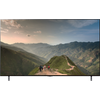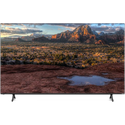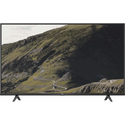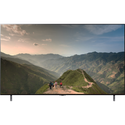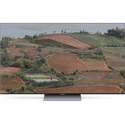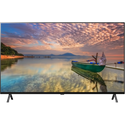A comparison of specs, key information, reviews, and best pricing from top retailers
Last updated -- hours ago | Report incorrect information
What we think

The PerfectRec TV team Learn more
Updated January 10, 2024·
The Amazon 4-Series is a budget-friendly option and offers a decent experience for general use, including watching news, talk shows, and reality TV. However, it's not the best choice for dark room viewing due to its lower performance in those settings. On the other hand, the LG QNED90 is more expensive but provides superior overall picture quality with better performance for watching sports, gaming, and movies. It also offers better brightness for viewing in well-lit rooms. If these features are important to you and you're willing to spend more, the LG QNED90 could be the better choice. Give Feedback
this description is based on the product variant with some specs and product variant with some specs. At the time of writing, the variant with some specs cost some dollars and the variant with some specs cost some dollars.
Advantages of the Amazon 4-Series (LCD)
- The Amazon 4-Series (LCD) has no clear advantages over the LG QNED90 (LCD).
Advantages of the LG QNED90 (LCD)
- Good for bright room
- Good for dark room
- Very good for gaming
- Very good for news, talk, & other TV
- Good for cartoons & animation
- Good for use as monitor
- Good for upscaling
- Good motion processing
- Good viewing angle
Key differences
Picture Quality
5.7
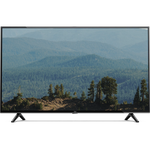
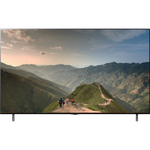
7.3
7.13/10
CONTRAST
5.60/10
6.2/10
COLOR VOLUME SCORE
7.4/10
LED
PANEL TYPE
LED FALD
VA
PANEL SUB-TYPE
IPS
The LG QNED90 (LCD) has good picture quality, while the Amazon 4-Series (LCD) has poor picture quality.
Movies & TV
5.2


6.8
7.13/10
CONTRAST
5.60/10
5.9/10
BLACK UNIFORMITY
5.3/10
6.6/10
UPSCALING
7.5/10
Yes
HDR10 SUPPORT
Yes
No
HDR10+ SUPPORT
No
No
DOLBY VISION SUPPORT
Yes
The LG QNED90 (LCD) is only fair for movies & TV, while the Amazon 4-Series (LCD) is poor.
The Amazon 4-Series (LCD) is considered poor for watching movies and cinematic TV largely because it lacks a local dimming feature, which is essential for deeper blacks and contrast, and it exhibits inadequate black uniformity, resulting in less immersive dark scenes. The LG QNED90 (LCD), although rated only fair, offers local dimming and better black uniformity, which enhances its contrast and visual performance in dark movie scenes, but it still has limitations in displaying a wide color volume and consistent colors out of the box.
Sports
5.7


6.7
2.5/10
MOTION PROCESSING
7.5/10
60Hz
REFRESH RATE
120Hz
8.0/10
INPUT LAG SCORE
8.0/10
6.6/10
UPSCALING
7.5/10
6.8/10
SDR BRIGHTNESS SCORE
8.7/10
Yes
HLG SUPPORT
Yes
The LG QNED90 (LCD) is only fair for sports, while the Amazon 4-Series (LCD) is poor.
Gaming
5.5


8.1
5.6/10
RESPONSE TIME SCORE
7.6/10
8.0/10
INPUT LAG SCORE
8.0/10
2.5/10
MOTION PROCESSING
7.5/10
0.0/100
GAMING LOCAL DIMMING
70.0/100
5.7/10
GAME HDR BRIGHTNESS SCORE
8.6/10
The LG QNED90 (LCD) is very good for gaming, while the Amazon 4-Series (LCD) is poor.
The Amazon 4-Series lags behind in gaming due to a poor response time, which affects how quickly the image updates and can lead to blurred motion in fast-paced games, while its refresh rate is limited to 60Hz, reducing the smoothness of gameplay compared to higher rates. In contrast, the LG QNED90 is superior for gaming with a good response time ensuring crisp motion and supporting a 120Hz refresh rate, providing a more fluid gaming experience with less motion blur and more responsive input.
Cartoons & Animation
5.4


7.6
5.9/10
COLOR GAMUT SCORE
7.8/10
6.2/10
COLOR VOLUME SCORE
7.4/10
6.8/10
SDR BRIGHTNESS SCORE
8.7/10
3.4/10
COLORS OUT OF THE BOX SCORE
7.6/10
5.9/10
GRAY UNIFORMITY
5.8/10
The LG QNED90 (LCD) is good for cartoons & animation, while the Amazon 4-Series (LCD) is poor.
The LG QNED90 (LCD) displays cartoons and animation better than the Amazon 4-Series (LCD) largely because it offers good colors straight out of the box, and both its color gamut and color volume are rated good, which ensures a wide and accurate representation of colors. On the other hand, the Amazon 4-Series has poor scores in these areas, resulting in less vibrant and accurate colors for animated content.
News, Talk, & Other TV
5.7


8.0
6.8/10
SDR BRIGHTNESS SCORE
8.7/10
6.6/10
UPSCALING
7.5/10
The LG QNED90 (LCD) is very good for news, talk, & other TV, while the Amazon 4-Series (LCD) is poor.
The Amazon 4-Series struggles with watching news, talk shows, and other TV programs, primarily because of its fair upscaling and SDR brightness, which could lead to a less clear picture and dimmer display in brighter rooms. In contrast, the LG QNED90 excels in these areas with very good SDR brightness and upscaling, resulting in sharper images and better visibility even in well-lit environments.
Bright Room
6.1


7.7
5.2/10
VIEWING ANGLE
7.7/10
6.8/10
SDR BRIGHTNESS SCORE
8.7/10
5.6/10
HDR BRIGHTNESS SCORE
8.3/10
6.3/10
REFLECTIONS SCORE
6.0/10
The LG QNED90 (LCD) is good for bright room, while the Amazon 4-Series (LCD) is only fair.
The Amazon 4-Series struggles with brightness and reflection handling, making it only fair for use in bright rooms, while the LG QNED90 offers significantly better SDR and HDR brightness, combined with adequate reflection handling, making it a good choice for well-lit environments. The LG's superior contrast, color volume, and color gamut also contribute to a more vivid picture in comparison to the Amazon 4-Series.
Cost
$330


$2,000
$0
$500
$1,000
$1,500
$2,000
$2,500
$3,000
The Amazon 4-Series (LCD) has a price of $330 and the LG QNED90 (LCD) costs $2,000.

Let Us Help Find Your Perfect TV
Find your new TV
Give feedback
We’re constantly working to improve.
How the Amazon 4-Series (LCD) and the LG QNED90 (LCD) compare to other TVs
Spec Comparison
| Amazon 4-Series (LCD) | LG QNED90 (LCD) |
GENERAL | |||
|---|---|---|---|
| Price | |||
$330 | $2,000 | ||
Brand | |||
Brand | Amazon | LG | |
Release Date | |||
Release Date | August 3, 2021 | April 1, 2021 | |
Full name | |||
Full name | 4K55N400A | 65QNED90 | |
Screen Size | |||
Screen Size | 55" | 65" | |
Screen Resolution | |||
Screen Resolution | 4K | 4K | |
TV FEATURES | |||
|---|---|---|---|
Operating System | |||
Operating System | Fire OS | webOS | |
Sound Quality Score | |||
Sound Quality Score | 6.1/10 | 7/10 | |
NextGen Ready | |||
NextGen Ready | No | No | |
HDMI Ports | |||
HDMI Ports | 4 | 4 | |
Coax Ports | |||
Coax Ports | 1 | 1 | |
DISPLAY QUALITY SCORES | |||
|---|---|---|---|
Picture Quality Score | |||
Picture Quality Score | 5.8/10 | 7.4/10 | |
Bright Room Score | |||
Bright Room Score | 6.1/10 | 7.8/10 | |
Gaming Score | |||
Gaming Score | 5.6/10 | 8.1/10 | |
Movies & TV Score | |||
Movies & TV Score | 5.3/10 | 6.8/10 | |
Sports Score | |||
Sports Score | 5.8/10 | 6.8/10 | |
PHYSICAL | |||
|---|---|---|---|
Dimensions w/o Stand (H x W x D) | |||
Dimensions w/o Stand (H x W x D) | 28.3" x 57.2" x 3.5" | 32.6" x 56.9" x 1.1" | |
Dimensions with Stand (H x W) | |||
Dimensions with Stand (H x W) | 29.8" x 57.2" | 35.4" x 56.9" | |
Weight without Stand | |||
Weight without Stand | 42.5 lbs | 57.8 lbs | |
VESA Mount | |||
VESA Mount | 300 x 300 | 400 X 400 | |
DISPLAY | |||
|---|---|---|---|
Color Depth | |||
Color Depth | 10 bit | 10 bit | |
Black Frame Insertion | |||
Black Frame Insertion | No | Yes | |
Auto Low Latency Mode | |||
Auto Low Latency Mode | Yes | Yes | |
Contrast | |||
Contrast | 7.1/10 | 5.6/10 | |
Local Dimming | |||
Local Dimming | 2.5/10 | 6.5/10 | |
SOUND | |||
|---|---|---|---|
Speaker Setup | |||
Speaker Setup | 2.0 | 2.2 | |
Speaker Power | |||
Speaker Power | 16 W | 40 W | |
Dolby Atmos | |||
Dolby Atmos | Bypass only | Yes | |
DTS:X | |||
DTS:X | No | No | |
Shopping
Amazon 4-Series (LCD)
See more
Dig into reviews and images
Tech Advisor
Jim Martin | May 2023
"The attraction here is that the 4-Series uses Amazon’s Fire TV interface. Picture quality is good but unexceptional. At the discounted prices, which can seemingly be had regularly, they are better value."
LG QNED90 (LCD)
See more
Dig into reviews and images
Home Media Entertainment
Stratos Kampourogiannis | September 2021
"When it comes to HDR brightness it has very bright highlights and impressive HDR. In terms of design the QNED90 looks beautiful. The TV did great with fast response times, excellent reactions and instant rendering of all our commands. If you look for a good performing premium 4K TV the QNED90 ticks all the boxes."
Get a great deal on the Amazon 4-Series (LCD) or the LG QNED90 (LCD)
About Amazon
Amazon, the largest online retailer in North America, has forged partnerships with TCL and Hisense to produce white-label TVs incorporating their Fire OS software. These Amazon-branded TVs typically compete in the low-end and mid-range segments, offering compelling price points. Leveraging their strong reputation, Amazon has swiftly built brand trust in the TV market despite being relatively new to it. To enhance their popularity, these TVs integrate features from the Amazon ecosystem, including Alexa, providing users with a seamless and interconnected TV experience.
About LG
LG, a prominent TV brand from Korea, has played a significant role in popularizing OLED TVs. OLED technology is hailed as the future of TV technology. Their TVs employ WebOS, a proprietary smart TV software that not only offers seamless functionality but also includes gaming-specific features, earning praise from players worldwide. Often regarded as the gateway to unparalleled viewing experiences, LG's mid-range OLEDs come highly recommended, making them a worthwhile investment for those willing to stretch their budget for superior quality.
Give feedback
We're constantly perfecting our model
TV guides you might be interested in
More comparisons for you
FAQs
FAQs about TVs
Why trust us
This information was produced and vetted by the PerfectRec TVs team. We are a product research and recommendation organization that meticulously reviews and evaluates the latest TV information and makes it digestible for you.
By the numbers
385
TVs evaluated
33,110
TVs stats compiled
21
Proprietary TVs ratings developed
160,830
Recommendations made
24,125
Consumer hours saved
About the TV team
Joe Golden, Ph.D
CEO and TVs Editor
Joe is an entrepreneur and lifelong electronics enthusiast with a Ph.D in Economics from the University of Michigan.
Jason Lew
Staff Expert & Software Engineer
Jason is a staff expert and software engineer that has been making laptop recommendations for 7 years and moderates one of the largest laptop subreddits.
Chandradeep Chowdhury
Staff Expert & Software Engineer
Chandradeep is a staff expert and software engineer and expert in televisions and monitors. He’s been making monitor recommendations for ten years.
Jaime Roldán
TVs Expert
Jaime is a Colombia-based TV expert. He is an electronics engineer with 8 years of experience in the telecom sector and has been making TV recommendations for 12 years.

